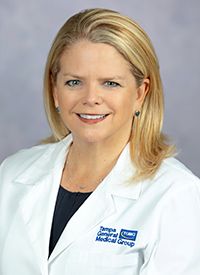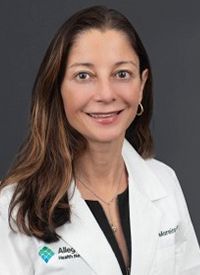Opinion
Article
Breast Nerve Preservation and Grafting: How Surgeons Can Help Mitigate Sensation Loss
Author(s):
Key Takeaways
- Surgeons are increasingly addressing post-mastectomy chest numbness, discussing nerve damage and its impact on patients' quality of life.
- Breast neurotization, a collaborative process between breast surgeons and plastic reconstructive surgeons, can help restore sensation after mastectomy.
More surgeons are having in-depth conversations with their patients with breast cancer and prophylactic patients about the fact that nerves will have to be cut during their mastectomy, how that will impact sensation and quality of life, and how surgeon collaboration and breast neurotization can help restore sensation.
Angela J. Keleher, MD

Post-mastectomy chest numbness is finally starting to get the attention it deserves. More surgeons are having in-depth conversations with their patients with breast cancer and prophylactic patients about the fact that nerves will have to be cut during their mastectomy, how that will impact sensation and quality of life, and how surgeon collaboration and breast neurotization can help restore sensation.
It’s important to know that mitigating post-mastectomy chest numbness is a two-surgeon job. Both a breast surgeon and a plastic reconstructive surgeon play critical roles. Breast surgeons identify and preserve the nerves as much as possible, and plastic reconstructive surgeons perform nerve grafting—it’s a collaborative process.
Consider as a case example, a bilateral mastectomy and immediate reconstruction. Collaboration starts before the first incision is made. Together, the surgeons review the patient’s case, including preoperative imaging, the type of reconstruction, tumor location, and incisions. During this process, they will discuss the potential for any nerve preservation during dissection, as well as which nerves need to be cut, but may be candidates for nerve allograft reconstruction (breast neurotization).
Andrea A. Moreira, MD

What does nerve identification and preservation entail?
Understanding nerve anatomy and the location of nerves in the breast is crucial for nerve preservation. It’s important to know that the dominant sensory innervation to the breast originates from the medial and lateral cutaneous branches of the third, fourth, and fifth intercostal nerves, all of which are at high risk of injury during a mastectomy. Through careful identification and preservation of the lateral fourth intercostal nerve, a longer length of the breast sensory nerve can be retained, enabling nerve grafting by the plastic reconstructive surgeon.
Furthermore, identification of the nerve is best performed with the use of loupe magnification during the surgery and careful, sharp dissection avoids possible thermal injury associated with use of electrocautery (Bovie) instruments. Precise dissection and careful treatment of the nerves may also help minimize potential for post-mastectomy nerve pain in the future.
How does nerve grafting work?
Going back to the case example of a bilateral mastectomy and immediate reconstruction, imagine the first mastectomy is complete. The plastic surgeon would then begin the reconstruction and nerve grafting while the breast surgeon starts the contralateral mastectomy. Being across from each other allows each surgeon to continue their separate work while communicating about the nerves and other details of the surgery.
Nerve grafting means sensory nerves in the chest are reconnected using a nerve allograft to bridge the discontinuity caused by the mastectomy. The allograft acts as a scaffold and a guide to allow the nerve to regenerate over time, without tension in the reconstructed breast.
Setting expectations
It’s important for surgeons and patients alike to have realistic expectations for regaining sensation; it will take time, and it won’t be 100% of what it was before surgery. It can also be beneficial to have a sense of the individual patient’s level of preoperative breast sensation because everyone is different. Nerves regenerate slowly, at a rate of around 1 mm/day, so the return of sensation in the reconstructed breast can occur over a period of several months to up to 2 years.
Whether a patient chooses implant reconstruction or free flap reconstruction, such as deep inferior epigastric perforators, they may be a candidate for breast neurotization. With breast and plastic surgeons working together as a team to preserve and graft the nerves, more women can have the opportunity to feel whole again after breast cancer.
Dr Keleher is a breast surgical oncologist and the Director of Breast Surgery at Tampa General Hospital. Additionally, she is an Assistant Professor of Surgery at the University of South Florida.
Dr Moreira is a board-certified plastic surgeon specializing in the use of advanced techniques in breast reconstruction. She is the Co-Director of the Microsurgery and Breast Reconstruction Program in the Allegheny Health Network Division of Plastic Surgery.












%20(2)%201-Recovered-Recovered-Recovered-Recovered-Recovered-Recovered-Recovered-Recovered-Recovered-Recovered-Recovered-Recovered-Recovered-Recovered-Recovered-Recovered-Recovered.jpg?fit=crop&auto=format)
%20(2)%201-Recovered-Recovered-Recovered-Recovered-Recovered-Recovered-Recovered-Recovered-Recovered-Recovered-Recovered-Recovered-Recovered-Recovered-Recovered-Recovered-Recovered.jpg?fit=crop&auto=format)
